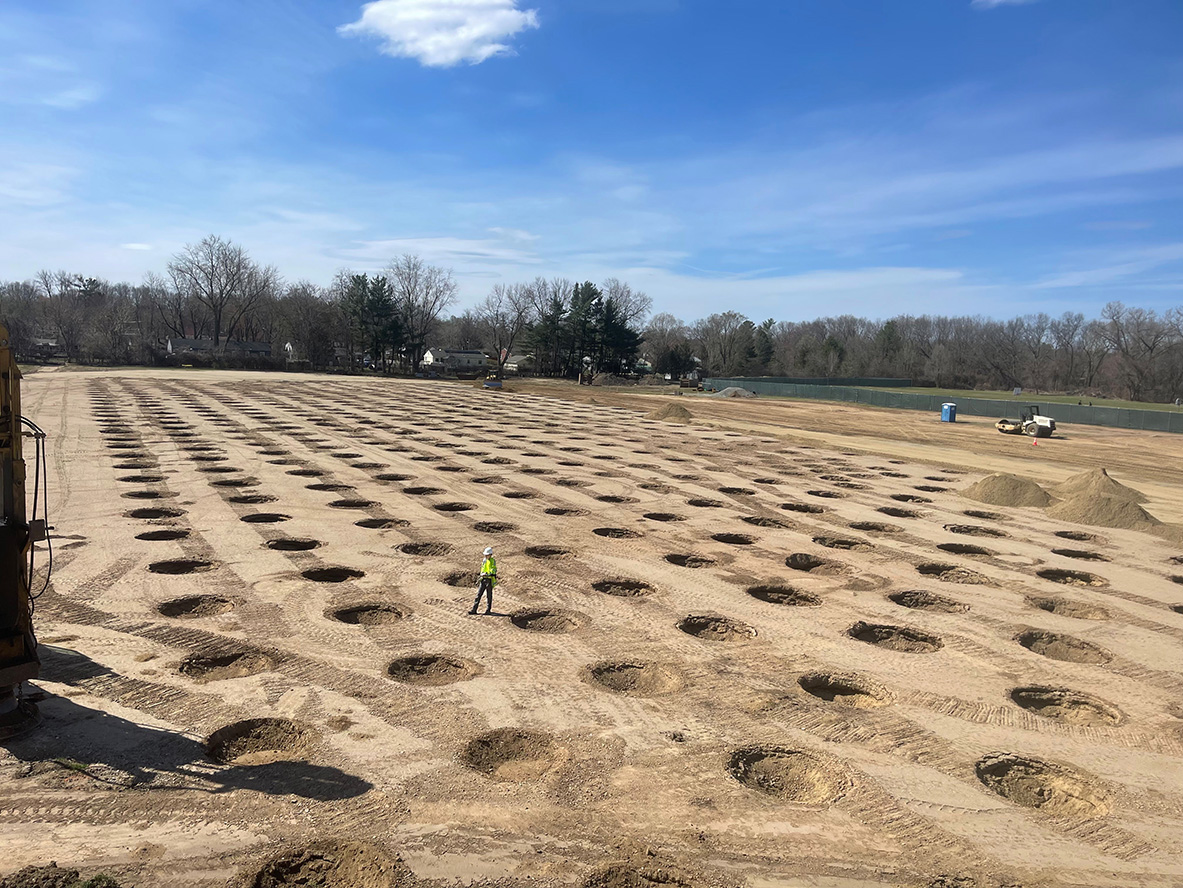Rapid Impact Compaction (RIC)
Rapid Impact Compaction (RIC) is a ground improvement method that densifies existing surficial granular soil layers up to about 10 to 15-feet-thick. RIC enhances unsuitable soils in-place, resulting in an improved subgrade capable of supporting traditional shallow footings, slabs-on-grade, pavements, or other features that require a stable soil subgrade. RIC can be a cost-effective alternative to removal and replacement of unsuitable soils and other forms of ground improvement, such as deep dynamic compaction (DDC).
RIC is performed with a self-contained hydraulic hammer assembly equipped with a 5-foot diameter tamping foot. The hammer assembly and tamping foot are mounted on the front of a large tracked excavator.
RIC is typically performed in a tightly spaced grid pattern throughout (and just beyond) the proposed building footprint area. At each RIC grid point, the tamping foot delivers high-energy compactive “Drops” in rapid succession at a rate of about 40 to 50 Drops per minute. One “Pass” at a RIC grid point consists of a prescribed number of Drops (usually about 10 to 50 Drops). A Pass is considered complete after the prescribed number of Drops has been completed, or practical refusal has been achieved. After one Pass has been performed through the site at each RIC grid point, the resulting “craters” are backfilled and leveled. Secondary and tertiary Passes are sometimes completed depending on the results of the first Pass and the requirements of the project geotechnical consultant.


